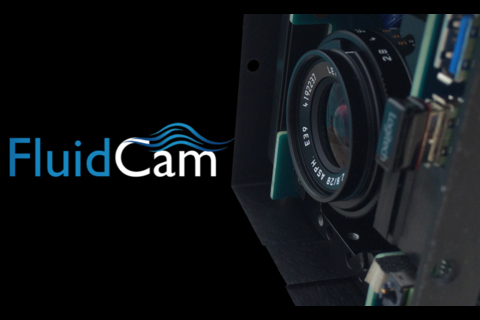A CubeSat-based Computational Imaging System
The growing interest in using Fluid Lensing as a tool for science-based remote sensing missions has led to the development of high performance optical imagers. Novel hardware requirements imposed by Fluid Lensing has pushed the boundaries of commercially available hardware, spurring the development of both airborne and space-based equipment, including custom-designed integrated optical systems with high-performance computational instruments, packaged in a 1.5U CubeSat form factor, or FluidCam for short.
The small Unmanned Aerial System (sUAS)-based FluidCam imaging systems were upgraded from TRL 2 to TRL 6 under an ESTO QRS'14 grant contracted to Pumpkin Inc., an industry leader in CubeSat hardware development. At present, both FluidCam 1 (380-720nm color) and FluidCam 2 (300-1100nm panchromatic) are actively being used for sUAS-based science missions, with a focus on mapping shallow coastal reef systems. FluidCam 1 and 2 are currently undergoing a series of instrument validation tests, system benchmarking and in-flight field demonstrations on sUAS. Ongoing field campaigns and test flights will be conducted through 2022.
FluidCam is a fully equipped portable imaging system for remote sensing applications; it's small enough to be mounted on sUAS-based gimbles (10cm x 10cm x 15cm) and comes with a fully integrated onboard computing system, which can run various imaging reconstruction algorithms, including Fluid Lensing, on a 1.5 GHz quad-core Intel NUC Core i5 CPU. The imaging system's focal plan array outputs 10-bit uncompressed, 4 megapixel image data at 90 fps.





